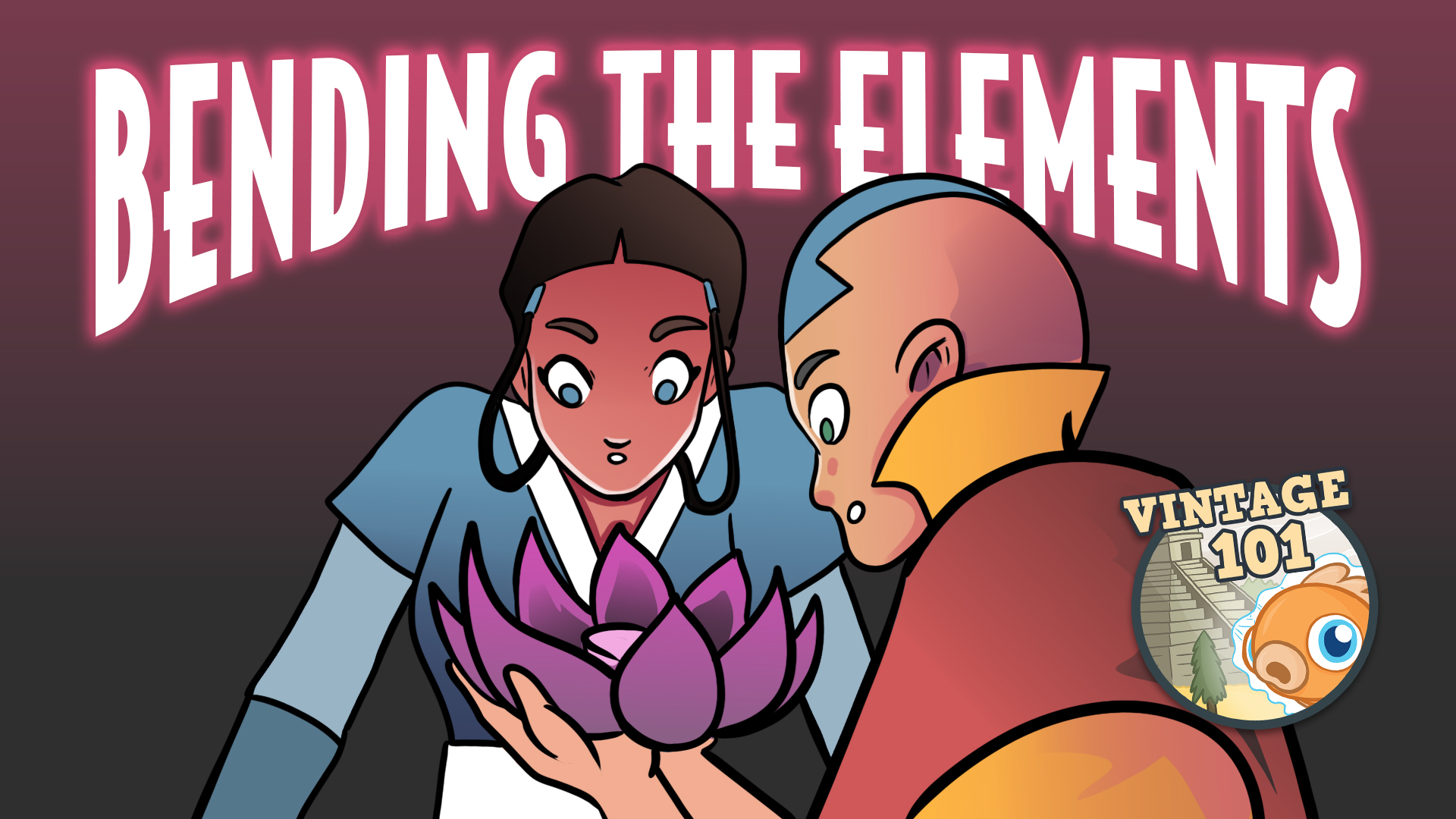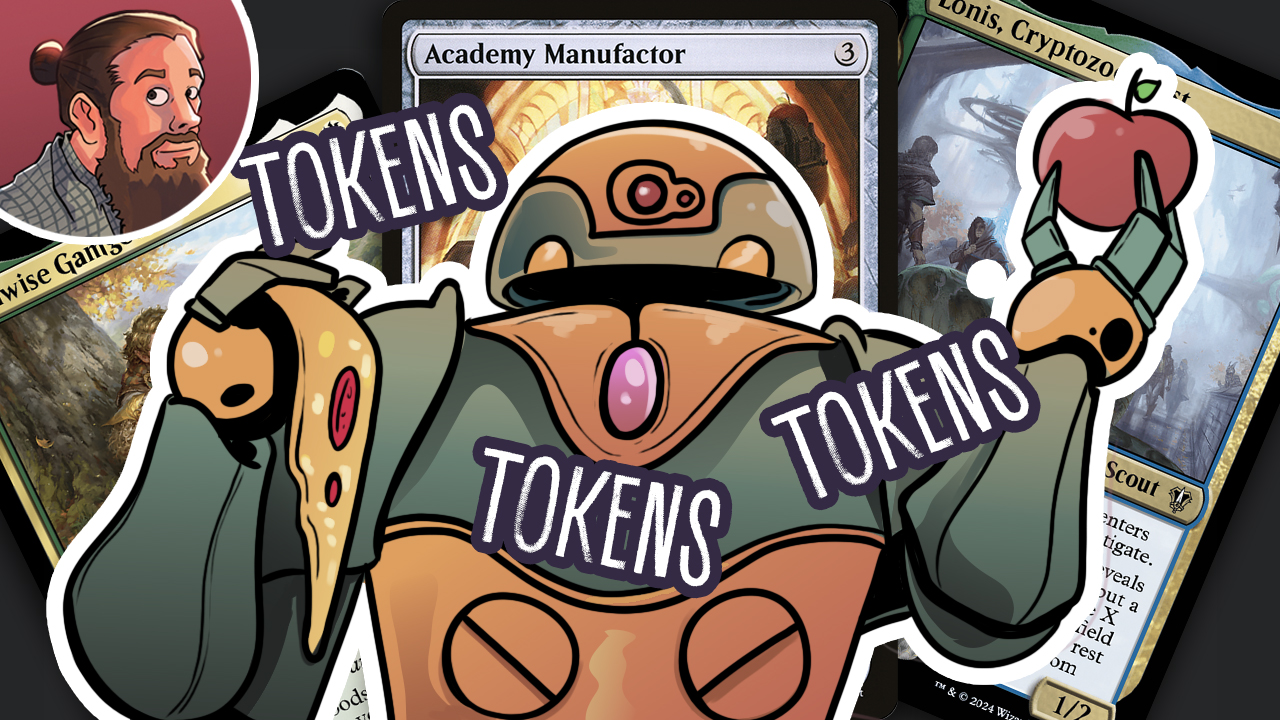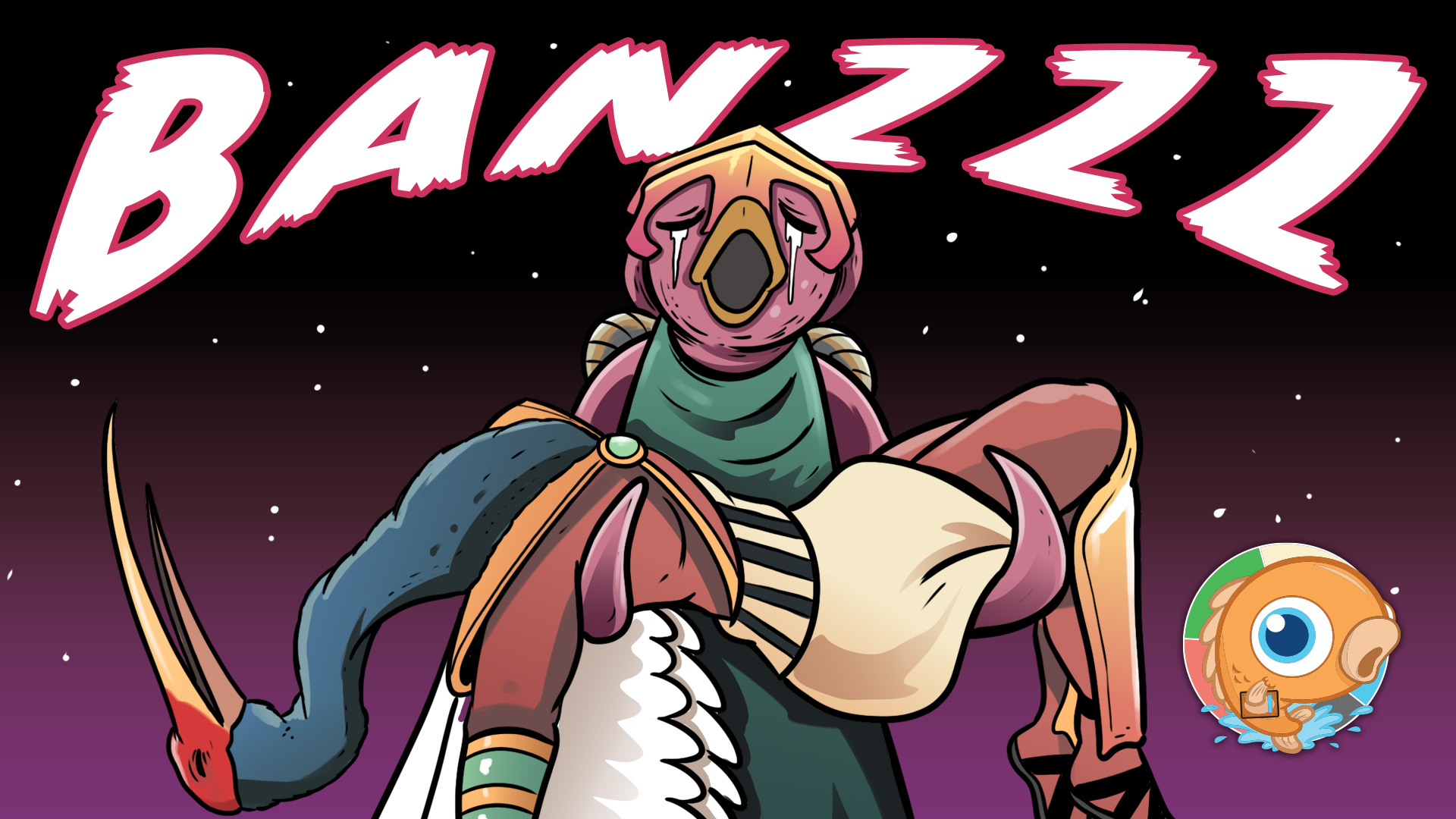So You Need a Reserved List Card...
Reserved List buyouts and price increases have been parts of the Magic finance realm for years now. The nature of the list itself—a guarantee of artificial scarcity—makes cards on the Reserved List easy targets for finance-based buyouts and popular collector items. However, we've never really seen anything like the buyouts and price increases that have happened over the past month, with the prices of many old sets nearly doubling in about a month. While the bigger gainers are highly collectible staples—the Wheel of Fortunes, Gaea's Cradles, and dual lands of the world—pretty much everything on the Reserved List has been (or will be) targeted.
Of course, Wizards could stop all of this insanity in a minute by ending or revising the Reserved List itself. Everyone from Wizards employees to big vendors to the average player knows that the Reserved List is a net negative in 2021, even if it did serve a purpose 25 years ago when it first came into existence. However, because pretty much everyone agrees that the Reserved List is a bad thing for the game of Magic and would prefer it disappear yet nothing has changed, there isn't much of a reason to rehash the problems with the list or spend a bunch of time calling for it to end.
Instead, our focus today is on how to work within our currently broken system. What do you do if you really need a Reserved List card to finish a Commander deck, but you rightly don't want to (or can't) pay $1,200 for a Gaea's Cradle or Underground Sea? Sadly, there isn't a perfect answer to this question. That said, there are a few possibilities that can allow you to finish your deck without breaking the bank. I should probably make it clear that our focus today is on Commander, rather than formats like Legacy and Vintage. Commander has the upside of being a casual format, which opens up many more possibilities for getting around the Reserved List in ways that simply don't work for sanctioned play.
1. Substitute


Perhaps the most obvious (but also least satisfying) answer to the Reserved List problem on an individual level is to simply substitute in a cheaper non–Reserved List card for the overpriced Reserved List card you really want. While I hate the idea that some really sweet, old cards will essentially be lost to the sands of time if this is a popular solution, this might be unavoidable in our current environment, at least in some cases.
Let's say you really want an Underground Sea for your Commander deck. You could spend $1,200 to get a copy, or you could run the next best option: Watery Grave for $10. Is Underground Sea better than Watery Grave? Strictly speaking, the answer is yes. Underground Sea is never going to cost you two life, while Watery Grave will some percent of the time. Does this two life really matter all that much in the context of a causal Commander game? Usually not. There are so many good lands in print today that you can very easily run a strong, consistent mana base without original dual lands.


On the other hand, people who strongly support the substitute technique tend to focus on the instances in which this works well (dual lands) and gloss over the fact that some of the Reserved List cards most important to the Commander format (Wheel of Fortune and Gaea's Cradle) don't have substitutes that are anywhere close to their original. It takes a lot of squinting and stretching to see Growing Rites of Itlimoc as even being in the same world as Gaea's Cradle, while Wheel of Misfortune has the drawback of killing you sometimes, which obviously is missing from Wheel of Fortune itself.



Sure, technically, there are other cards that are functionally similar to a card like Wheel of Fortune, but they are so much worse than the original that it's difficult to consider them as true substitutes. While you can trade Underground Sea for Watery Grave and hardly notice the difference, you are going to feel the difference when you top deck a Magus of the Wheel rather than a Wheel of Fortune when you really need to refill your hand, and you'll feel it a lot.



Apart from the issue of some cards not having playable substitutes, the other reason I tend to dislike this advice is that part of what makes formats like Commander fun is the diversity that they offer, and this diversity is built, in part, on players being able to access and play with weird, old, nostalgic cards that don't really see play in other formats. While a card like Skeleton Ship being bought out and jumping in price doesn't matter to tournament players or even most Commander players, it matters a lot to the poor soul trying to build a Skeleton tribal deck, and part of what makes Commander such a magical format is that you can build a deck like Skeleton Tribal. Commander loses part of its soul and ethos without the ability to build fun, weird, flavorful decks.
All in all, while substituting isn't a great solution for all cases, it is a good one for some.
2. Look for Played Copies
When you look at prices on MTGGoldfish, the default is TCG Mid, which is focused on near-mint copies of the card in question. Add in the low supply of many Reserved List cards (which occasionally allows sellers to manipulate the headline price number by listing a copy at an unrealistically high price point, which is how we ended up with Moat at $100,000 this week, even with a BSG 9.5 copy for sale at $3,400 and a played copy at $1,500), and the headline price of a card tends to overstate the price that you can actually get the card for, if you are willing to lower your standards a bit.
Let's circle back to Underground Sea. While TCG Mid has been floating at around $1,200 for more than a week now, if you actually look on TCGplayer, you'll find a bunch of heavily played copies in the $650 range and moderately played copies at around $800. While $600 or $800 certainly isn't cheap for a piece of cardboard, it is a lot cheaper than $1,200 for that same piece of cardboard in slightly better condition. In general, collectors are looking for near-mint (or even graded) copies of cards as investments, which often leads to a huge gap between the price of played and unplayed copies. As a player who cares primarily about Underground Sea as a game piece rather than as an investment, a few dings, scratches, or an artist's signature probably aren't a big concern. Toss it in a couple of sleeves, and nobody will know the difference.

The downside of going with played copies is that it can make it harder to resell your copies in the future, especially for anywhere near the headline price. But if your goal is to have an Underground Sea to play in your Commander decks for the next 20 years, does the resale value really matter that much, especially if you can get a massive discount upfront? Probably not.

In general, if you're willing to pick up a heavily played version of a card, you can usually safe close to 50% off of the headline near-mint price, if you're willing to dig around a bit. Just a couple words of warning. First, be wary of "damaged" cards. While being played or even heavily played is fine, ideally, the cards that you buy will be in good enough shape to be tournament playable. While a dinged-up Underground Sea will save you money and you should still be able to sell it if you ever do need to cash out (although not for the headline price), a damaged Underground Sea that isn't legal in tournaments could be extremely difficult to resell. Plus, if you are going to spend money on expensive Reserved List cards, you probably want them to be tournament legal, just in case you end up deciding to give Legacy or Vintage a try some day. Thankfully, there really isn't much of a price difference between cards listed as damaged and as heavily / moderately played, in many cases. Make sure to look at the scans and pictures, and judge the quality of the card for yourself because "heavily played" can mean a lot of things. Basically, the goal should be to get the cheapest Underground Sea (or [insert Reserved List cards here]) that is still in good enough shape to see tournament play.

Secondly, be careful on sites like eBay because counterfeit cards are a problem. Thankfully, being moderately or heavily played actually decreases the chances that you're buying a counterfeit because it's not all that easy to make counterfeit cards look like they are played (and making them look played lowers the value). However, if you are digging around on eBay trying to find the cheapest copies of Underground Sea, if you come across something that looks way too good to be true (like a copy that looks pack fresh for the same price as the heavily-played versions), it probably is too good to be true. While you should be able to get a refund if you accidentally end up buying a counterfeit card, it can be a hassle, and it's probably best to avoid "too good to be true" deals just to save yourself the potential headache of trying to go through the refund process.
3. Proxy

Rising along with prices of Reserved List cards is the acceptance of proxies for casual play. Often lost in absurd prices and finance schemes is the fact that, beneath everything else, a Magic card is just a game piece, no different than the Dog in Monopoly or those little army men in Risk. While you will need real, authentic Magic cards for tournament play, anything goes for kitchen table and casual play. Would you like to know the difference between a $1,200 near-mint Gaea's Cradle and a Forest with "Gaea's Cradle" written on it with Sharpie? Trick question—there isn't one, as far as casual gameplay is concerned.
It is incredibly easy to make a proxy or playtest cards essentially for free. You can Sharpie over a basic land. You can print out a piece of paper on your home printer to stick in a sleeve over a basic land or random common. If your primary goal is to play casual games of Magic but you don't want (or have the ability) to spend even the heavily played price for a "real" Underground Sea, Wheel of Fortune, or [insert Reserved List card here], just make one yourself. I can promise you that Mark Rosewater is not going to teleport into your kitchen and shame you for proxying your Underground Sea rather than spending hundreds of dollars on a real copy.

Some cards have weird not-tournament-legal printings (for example, gold-border World Championship cards). And while these cards can work like semi-official proxies, the good ones are also quite expensive. On eBay, it will cost you close to $200 for a World Championship Gaea's Cradle, which is less than you'd pay for a tournament-playable copy for sure but also a ton to pay for a card that is explicitly not legal for tournament play. Still, if original art is something you care about deeply, these semi-official proxies can be an option.
Another cheap-ish but still stylish option is to buy proxies from proxy artists. While Wizards owns a lot of the IP on Magic cards (the art, mana symbols, etc.) there is t nothing illegal about a piece of cardboard the same size of a Magic card with some unique custom art that might look a bit like a Mox, an Underground Sea, or a Wheel of Fortune. Here, it is important to point out the difference between proxies and counterfeit cards. A proxy isn't trying to look like an authentic Magic card. A counterfeit is trying to mimic a real card as closely as possible.
I'm very strongly against counterfeit cards. While some people like to think that buying counterfeits is "sticking it to the man" and somehow punishing Wizards, in reality, the community is often what ends up being hurt. Wizards currently makes zero direct dollars off of cards like Wheel of Fortune or Underground Sea. Buying a counterfeit card isn't hurting it at all. However, a counterfeit card slipping into the market and being sold as a real card to another community member has a very direct, negative impact on the community. While some people argue that they are never planning on selling the counterfeit card, I've bought enough collections from garage sales and off Craigslist where someone plays Magic, moves away to college, forgets about the game, and has their parents sell their cards to know that even if you think right now that your cards will never end up on the market, there's a good chance that they eventually will. There is also absolutely zero reason for anyone to use counterfeits for casual play because a legal, ethical proxy will do the same job, most likely for an even lower cost.
While counterfeit cards harm the community and should be avoided at all costs, the bottom line is that when it comes to casual play with your local playgroup or on your kitchen table, you should do whatever makes the game most fun for you and your playgroup. If that means playing proxy versions of expensive Reserved List cards, go for it! The goal of a Commander game is to create a fun experience for the entire table. If that means playing with some proxies, you should play with some proxies. While I would argue that you should proxy ethically (avoiding counterfeits for sure and ideally avoiding proxies that are using Wizards' IP without permission), I'd also argue that if proxying is what makes the game the most fun for you and your playgroup, you should wholeheartedly embrace the option.
Conclusion
Anyway, that's all for today. The Reserved List buyout and price issue is only going to get worse. This is the nature of the list itself. Thankfully, there are several ways for players to still be able to experience the joy of resolving a Wheel of Fortune or tapping a Gaea's Cradle for 10 mana without spending hundreds or thousands of dollars. While tournament play is another issue, for casual Commander play, it is important to remember that Magic is a game and Magic cards are game pieces. Just like you'd replace a Monopoly piece you lost with a penny or army man when you were a kid and the world didn't come to a fiery end, you can scribble "Gaea's Cradle" on a Forest and stick it in your Commander deck, and everything is going to be okay.
Do you have a favorite proxy method? How do you handle proxies with your Commander playgroup? Let me know in the comments! As always, leave your thoughts, ideas, opinions, and suggestions, and you can reach me on Twitter @SaffronOlive or at SaffronOlive@MTGGoldfish.com.













